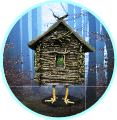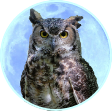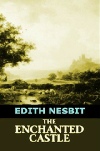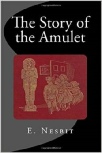






English author E. Nesbit’s works are real oldies, written before World War I. In addition to writing a huge number of children’s books, she and her first husband Hubert Bland (whose name apparently did not suit him) led a rather Bohemian life. She was one of the co-
Nesbit was an original in children’s fantasy, featuring realistic (albeit upper-
My favorites are the fantasies in the series that starts with the Psammead (a bad-
Although the princess that the three siblings in The Enchanted Castle encounter turns out to be Mabel, the housekeeper’s niece, some of the magic is real. Mabel becomes invisible when she puts on a ring. As they pass the ring around, the children have a variety of entertaining and cleverly told adventures. In my favorite part they make an audience of stuffed clothes and hats with painted paper faces to watch their play. When Mabel unthinkingly wishes that the audience would be alive, the Uglie-
The theme of being careful what you wish for is an ancient one. Ovid “grabbed a pile of dust” and “foolishly asked for as many birthdays as the grains of dust,” adding: “I forgot to ask that they be years of youth” (Metamorphoses). In the 1950s Edward Eager, heavily influenced by Nesbit, played with the required exactitude of wishes: the children in Half Magic find a magical coin that grants only half of their wish (their cat can half-
Many of the best light/humorous fantasies (including the ones reviewed here) examine the peculiar and exacting rules of magic and fairy tale/fantasy expectations, often influenced by Nesbit’s works.
E. Nesbit websites:
http://www.booksandwriters.co.uk/N/edith-
http://www.nybooks.com/articles/archives/1964/dec/03/the-

The Enchanted Castle (1907): Fantasies of E. Nesbit





Edith Nesbit
1858-